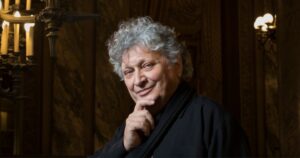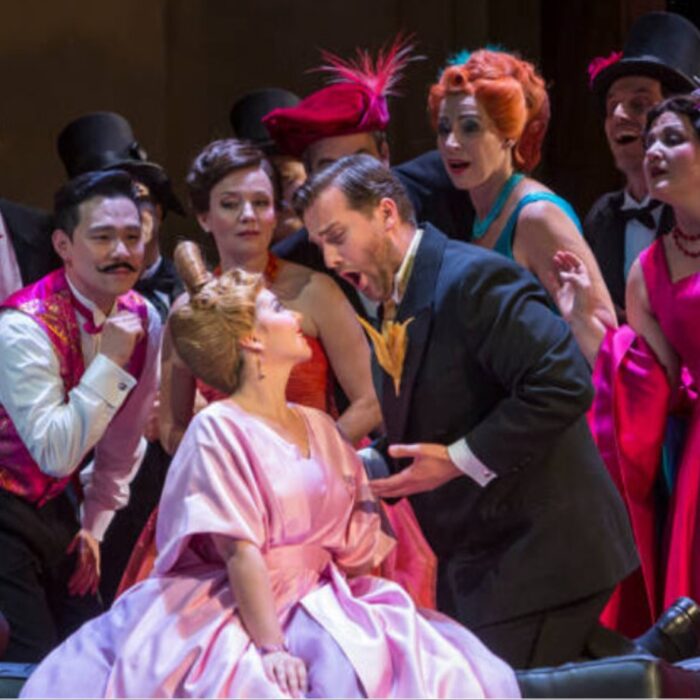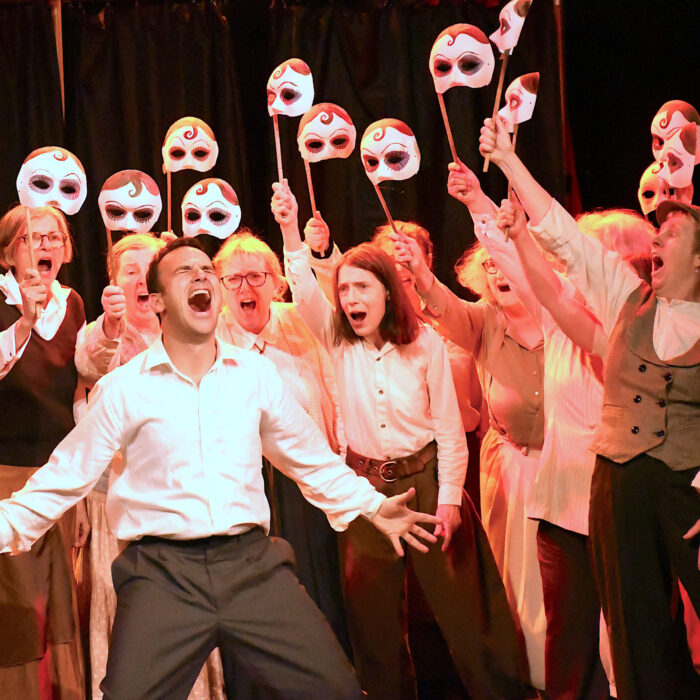
Konzertdirektion Hans Adler 2025 Review: Tamerlano
René Jacobs Transforms Handel’s Music Into Searing Psychological Theater
By Mengguang Huang(Photo: Philippe Matsas)
On May 12th, the Kammermusiksaal of the Berliner Philharmonie witnessed a gripping concert performance of Händel’s “Tamerlano,” with a refined ensemble of soloists, supported by the Freiburger Barockorchester under the direction of René Jacobs. In an era where Baroque opera is often presented with elaborate visual stagings, one might ask: what can the concert format still achieve, perhaps even heighten? In this case, the answer lay partly in the space itself. The Kammermusiksaal’s pioneering wraparound seating, designed nearly half a century ago, created an atmosphere of extraordinary intimacy, drawing the audience into direct, almost physical proximity with the performers. Within this close-contact setting, Jacobs zeroed in on the opera’s dramatic core.
Premiered in 1724, “Tamerlano” was part of Handel’s miraculous year that also produced “Giulio Cesare” and “Rodelinda.” While “Cesare” dazzled with theatrical spectacle, “Tamerlano” offered something with more psychological compression and emotional unravelling. Jacobs, ever the master dramaturge, had in fact reminded audiences of the libretto’s extraordinary quality in a pre-concert message circulated days earlier. In performance, he made good on this promise: his reading did not aim for vain heroic sweep or visual excess. Instead, it was a searing anatomy of power, love, and defeat—realized with surgical control, impeccable pacing, and an unwavering commitment to rhetorical and musical truth. In the execution of many Recitativo Accompagnato, Jacobs seized on this variety with theatrical insight, drawing upon an extraordinary and expressive palette range from the continuo group. The cello often shadowed the vocal line like an anxious conscience, while the plucked instruments added commentaries of irony, delicacy, or dread. The continuo organ also successfully sustained the tension in some swift shifting dialogues.
Thomas Walker, barefoot and draped in a coarse robe, entered the stage already marked by defeat—visually foreshadowing Bajazet’s fall from imperial power to captive humiliation. He delivered one of the evening’s most powerful and majestic performances. His voice—bright, expressive, and emotionally honest—was ideally suited to the Ottoman emperor’s tragic trajectory. From the opening scenes, Walker captured the character’s mounting fury and suppressed anguish, culminating in the famous Act one aria “Ciel e terra armi di sdegno,” which bristled with stoic defiance and featured bold, freshly imagined ornamentation. But the true watershed came in Act three, in a sequence that was not part of the original libretto but inserted by Handel—at the request of star tenor Francesco Borosini—based on earlier operatic treatments of the Tamerlane story. Here, Bajazet chooses death by poison rather than submission to his captor. The aria “Figlia mia, non pianger, no” became a devastating dual farewell: to his daughter Asteria and to his own dignity as sovereign. His final recitative “Tu, spietato, non farai” was not declaimed but breathed, almost whispered, each word seeming to cost him breath. Walker made this moment feel less like a scene and more like a ritual—the quiet end of imperial pride, drawn out in painful intimacy.
As Tamerlano, Paul-Antoine Bénos-Dijan at first seemed an unconventional choice for the title role. His countertenor voice, initially marked by a nasal edge, and his comparatively slight physical stature—especially alongside the taller figures of Walker and Chance—raised questions about whether he could fully embody the menacing central figure of the opera. But as the drama unfolded, all such doubts were quickly dispelled. Bénos-Dijan’s light-toned voice revealed a penetrating elegance and flexibility, deployed with an unsettling coolness that perfectly suited Tamerlano’s blend of seduction, calculation, and cruelty. Subtle costume touches—at one point the addition of a bright red flat cap worn with ironic nonchalance—mirrored the character’s shifting emotional masks and growing psychological complexity. In Act three “A dispetto d’un volto ingrato,” his voice danced with disdainful ease: there was no rage, only the chilling certainty of a man already in control. Bénos-Dijan portrayed Tamerlano not as a stormy despot, but rather as a predator cloaked in velvet—an antagonist who subtly heightens the emotional treachery of the opera.
Katharina Ruckgaber was an exceptional Asteria, portraying not merely a victim of male power but a woman constantly navigating its crushing weight with quiet defiance. Her Act three aria, “Cor di padre,” was filled with trembling fury, and Jacobs underscored the conflicting affective tones with a bitterly steady tempo and passion-like instrumental lines. Her chemistry with Chance was understated but real, with their duet “Vivo in te, mio caro bene” offering one of the few moments of fragile intimacy in an otherwise brutal world.
Alexander Chance as Andronico sang with lyrical warmth and striking interiority. In his Act one aria, “Bella Asteria, il tuo cor mi difenda,” Chance’s supple phrasing and mellow countertenor lent the character a sense of noble vulnerability—more lover than warrior, caught between desire and loyalty. But it was in Act two’s fiendishly difficult “Più d’una tigre altero” when his portrayal deepened. Far from treating the aria as mere vocal display, Chance mined its coloratura and sudden register leaps for psychological nuance, making Andronico’s anguish and helplessness palpably real. His voice quivered not with vocal strain, but with emotional exhaustion, each run and ornament suggesting a mind on the verge of collapse. It was a moment of raw virtuosity—one that transformed technical brilliance into emotional exposure.
Helena Rasker brought commanding presence and tonal richness to Irene. Though often a secondary figure, here Irene’s political cunning and emotional intelligence were brought into sharp relief. In “Par che mi nasca in seno,” Rasker sang with icy exactitude, her tone hinting at calculation even in moments of supposed affection. Her performance added an essential counterbalance to the emotional volatility of the others—a woman playing the same brutal game, and often better.
Matthias Winckhler’s Leone was cleanly and sensitively sung, his aria “Nel mondo e nell’abisso” shaped with noble restraint. He served as a quiet moral compass amid the surrounding darkness, given surprising weight through Jacobs’ dramaturgical framing.
The Freiburger Barockorchester, long-time collaborators of René Jacobs, once again demonstrated their exceptional artistry. In “Tamerlano,” Handel’s orchestral writing unfolds as an intricate web of interwoven string lines, where musical energy is constantly passed between different sections like a live current. The Freiburger Barockorchester navigated this with such stunning precision and vitality that one could almost feel the music move across the ensemble. In the crystalline acoustics of the Kammermusiksaal, this dynamic interplay gained an almost physical presence.
By eschewing a staged production, this “Tamerlano” laid bare the opera’s architecture and soul. In René Jacobs’ hands, Handel’s music was transformed into searing psychological theater—raw, lean, and utterly unforgettable, where every note carried the weight of emotional complexity.



